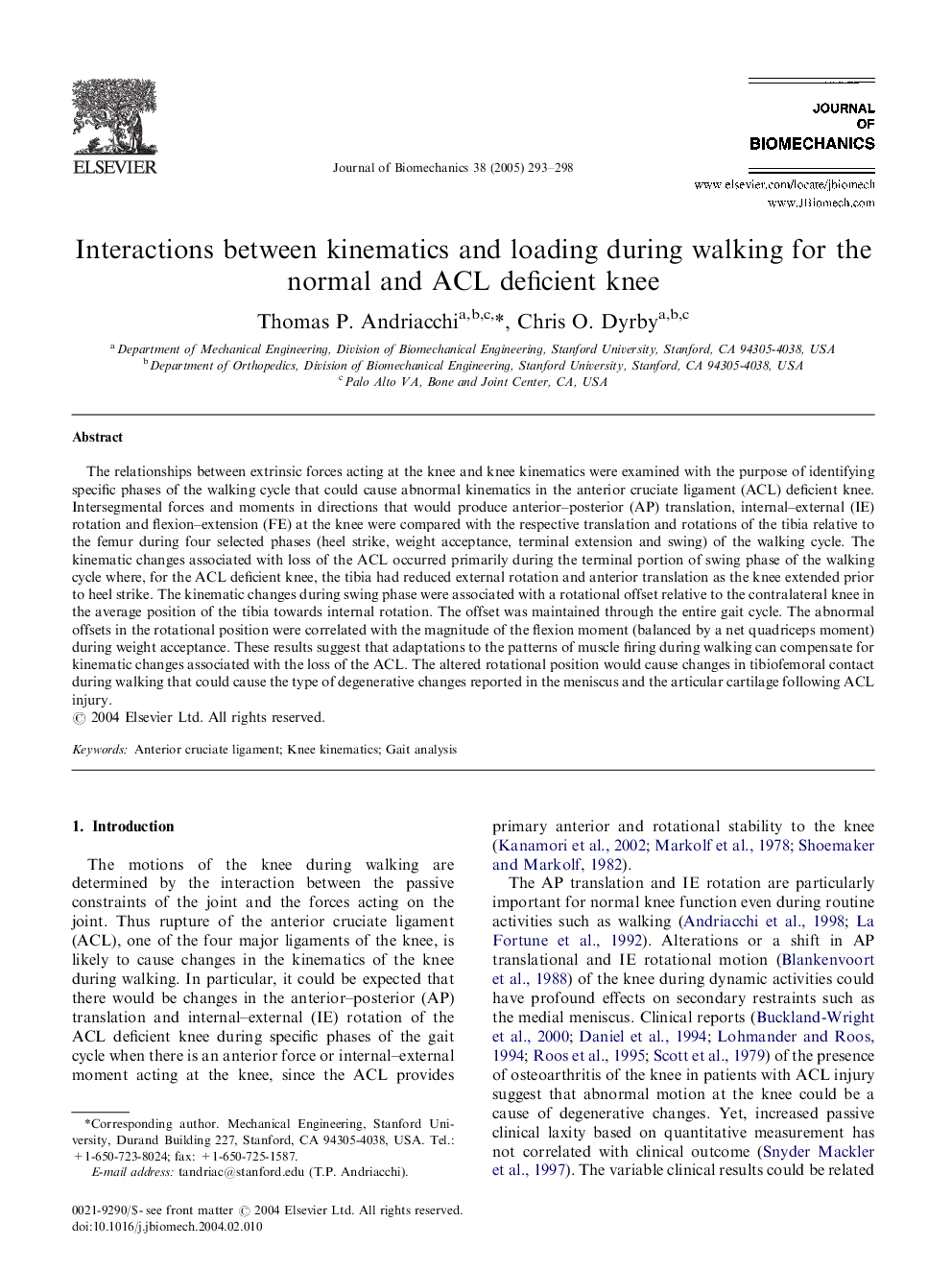| Article ID | Journal | Published Year | Pages | File Type |
|---|---|---|---|---|
| 10434522 | Journal of Biomechanics | 2005 | 6 Pages |
Abstract
The relationships between extrinsic forces acting at the knee and knee kinematics were examined with the purpose of identifying specific phases of the walking cycle that could cause abnormal kinematics in the anterior cruciate ligament (ACL) deficient knee. Intersegmental forces and moments in directions that would produce anterior-posterior (AP) translation, internal-external (IE) rotation and flexion-extension (FE) at the knee were compared with the respective translation and rotations of the tibia relative to the femur during four selected phases (heel strike, weight acceptance, terminal extension and swing) of the walking cycle. The kinematic changes associated with loss of the ACL occurred primarily during the terminal portion of swing phase of the walking cycle where, for the ACL deficient knee, the tibia had reduced external rotation and anterior translation as the knee extended prior to heel strike. The kinematic changes during swing phase were associated with a rotational offset relative to the contralateral knee in the average position of the tibia towards internal rotation. The offset was maintained through the entire gait cycle. The abnormal offsets in the rotational position were correlated with the magnitude of the flexion moment (balanced by a net quadriceps moment) during weight acceptance. These results suggest that adaptations to the patterns of muscle firing during walking can compensate for kinematic changes associated with the loss of the ACL. The altered rotational position would cause changes in tibiofemoral contact during walking that could cause the type of degenerative changes reported in the meniscus and the articular cartilage following ACL injury.
Related Topics
Physical Sciences and Engineering
Engineering
Biomedical Engineering
Authors
Thomas P. Andriacchi, Chris O. Dyrby,
